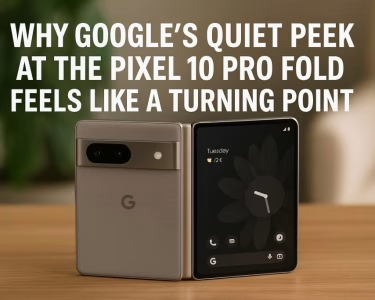The handheld gaming market has seen a renaissance in recent years, driven by devices like Valve’s Steam Deck, Lenovo’s Legion Go, and a wave of high-powered portable PCs. Now, Asus and Microsoft are stepping into the spotlight with the ROG Xbox Ally, a Windows-based handheld that merges cutting-edge hardware with a gaming-first software ecosystem. This collaboration doesn’t just signal another gadget entering the market—it represents a deliberate strategy to bridge the PC and console gaming worlds.
The Hardware Foundation: Ryzen AI at the Core
At the heart of the ROG Xbox Ally is AMD’s latest Ryzen AI architecture, a chip family that integrates Zen 5 CPU cores with advanced RDNA 3.5 graphics and dedicated AI accelerators. This architecture is optimized for both gaming and intelligent system management, making it distinct from traditional gaming laptops or handhelds.
- AI-Enhanced Performance Management: Ryzen AI can dynamically adjust clock speeds and power usage, ensuring the device runs efficiently without compromising on frame rates during demanding sessions.
- RDNA Graphics Pipeline: With RDNA 3.5 cores, the Ally delivers console-level visuals in a handheld form, enabling smooth gameplay on modern AAA titles at 1080p without draining the battery in minutes.
- On-Chip AI Accelerators: Beyond gaming, these allow features like real-time upscaling, enhanced voice recognition, and background system optimization—bringing console-like simplicity to Windows handheld gaming.
This marks one of the first times that dedicated AI cores have been positioned as a central selling point in a gaming handheld.
A True Xbox Experience on Windows
Unlike other handheld PCs that rely on SteamOS or a general Windows layer, the ROG Xbox Ally introduces a dedicated Xbox mode. This is more than a launcher—it’s a streamlined environment optimized for controller-first navigation, Game Pass integration, and quick access to your library.
- Seamless Xbox App Mode: Booting into this mode feels closer to an Xbox console than a traditional PC. Menus are clean, optimized for the handheld’s screen, and responsive thanks to Ryzen AI’s efficiency.
- Xbox Game Pass at the Center: With day-one access to Game Pass titles, players can instantly tap into one of the largest subscription libraries in gaming without worrying about compatibility.
- PC Gaming Flexibility: For players who want more, the Ally still runs full Windows 11, allowing access to Steam, Epic Games Store, and any launcher a PC gamer might need.
This hybrid approach—console simplicity layered over PC openness—is a smart way to appeal to both Xbox loyalists and PC enthusiasts.
Striking Energy Efficiency: Idle Mode Reimagined
One of the most underappreciated challenges for handheld gaming PCs is idle power draw. Even when not actively rendering high-end graphics, most devices continue to consume energy at laptop-like levels, leading to poor standby performance.
The ROG Xbox Ally introduces deep power state optimization:
- AI-Governed Idle States: The device can intelligently enter ultra-low power modes when idling in menus, streaming games, or downloading updates.
- Improved Battery Longevity: This optimization reportedly cuts idle power consumption by nearly half compared to rival handhelds. That means less wasted energy and longer usage per charge.
- Smart Cooling: Fans adjust not just based on temperature but predicted workload, reducing unnecessary noise and extending component life.
This is where the Ryzen AI hardware-software synergy becomes most visible. The result is not only better endurance in gaming but also a more console-like always-ready experience.
The Bigger Picture: Microsoft’s Portable Xbox?
Though branded as an Asus ROG device, the heavy Xbox integration reveals Microsoft’s strategic intent. Rather than producing its own handheld console, Microsoft is enabling its ecosystem to live across hardware partners, much like Windows PCs. The Ally becomes a showcase for how Xbox can evolve beyond the living room:
- A Bridge to Cloud Gaming: With native Xbox Cloud Gaming support, the Ally doubles as a portable Xbox Series X alternative, streaming graphically demanding games without relying on local hardware.
- Expansion of Xbox’s Ecosystem: By encouraging third-party hardware like the Ally, Microsoft sidesteps the risks of hardware exclusivity while still cementing Xbox as a universal gaming platform.
- AI-Driven Future: Microsoft’s push into AI-powered gaming (seen in Copilot and DirectSR) dovetails with the Ally’s Ryzen AI foundation, suggesting future synergy where AI not only optimizes performance but transforms gameplay experiences.
Competitive Positioning: Steam Deck, Legion Go, and Beyond
The ROG Xbox Ally is stepping into a crowded market, but its approach is distinct:
- Steam Deck thrives on Valve’s custom Linux OS and its tight integration with Steam.
- Lenovo Legion Go bets on larger screens and modular design.
- Asus ROG Xbox Ally differentiates itself by being the first to offer native Xbox OS-like integration with AI-powered efficiency.
This positioning makes it a unique proposition for players deeply invested in Game Pass but who also want the freedom of a full-fledged PC.
Final Thoughts
The ROG Xbox Ally isn’t just another gaming handheld—it’s a statement about where handheld gaming is heading. By combining Ryzen AI hardware, a dedicated Xbox experience, and aggressive power optimization, Asus and Microsoft have created a device that blurs the line between console and PC.
For gamers, this means a portable machine that doesn’t compromise—one that can act as an Xbox, a PC, or a hybrid of both depending on your needs. For the industry, it signals a new era where handhelds aren’t just novelties but serious platforms shaping the future of gaming.






